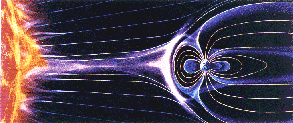This is an artist's rendering of solar wind coming towards the Earth and its magnetosphere.
Click on image for full size
NASA.
Solar Wind
The Sun is flinging 1 million tons of material out into space every second! We call this material solar wind.If you add all this material up over the course of a day, it's like the mass of Utah's Great Salt Lake. And this happens every day, day after day, year after year!
We can't see this material coming from the Sun, but we know that it causes:
The solar wind travels very, very fast, and it travels very, very far! The solar wind goes all the way out past Pluto to the heliopause. There are a few spacecraft like Ulysses and Voyager I & II which are helping scientists study solar wind from the Sun all the way out to Pluto.
You might also be interested in:
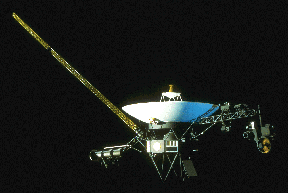
Unexpected discoveries made by the two Voyager spacecrafts during their visits to the four largest planets in our solar system have changed the field of space science. Voyager 2 was launched on Aug. 2
...more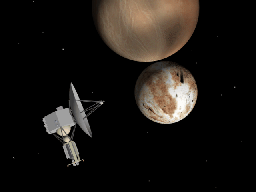
Pluto is a frigid ball of ice and rock that orbits far from the Sun on the frozen fringes of our Solar System. Considered a planet, though a rather odd one, from its discovery in 1930 until 2006, it was
...more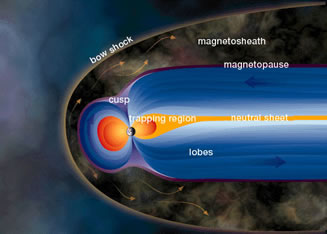
Motions within Earth's metallic core generate the planet's global magnetic field. This magnetic field extends beyond Earth's surface and atmosphere into the space surrounding our home planet. The interaction
...more
AU stands for Astronomical Units. It is an easy way to measure large distances in space. It is the distance between the Earth and the Sun, which is about 93 million miles. For really big distances, we
...more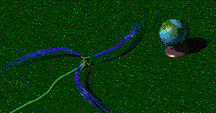
The solar wind is formed as the Sun's top layer blows off into space. It carries magnetic fields still attached to the Sun. Streams appear to flow into space as if they are spiraling out from the Sun,
...more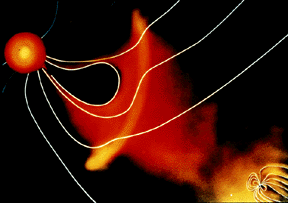
For a planet to be affected by a blob of material being ejected by the sun, the planet must be in the path of the blob, as shown in this picture. The Earth and its magnetosphere are shown in the bottom
...more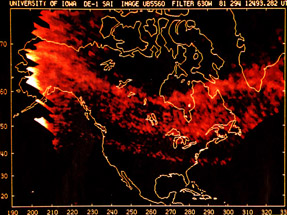
If someone says they saw an aurora, you might picture something like this. There is another type of aurora that we can't see. These aurora are called SAR arcs. The SAR stands for Stable Auroral Red. That
...more


